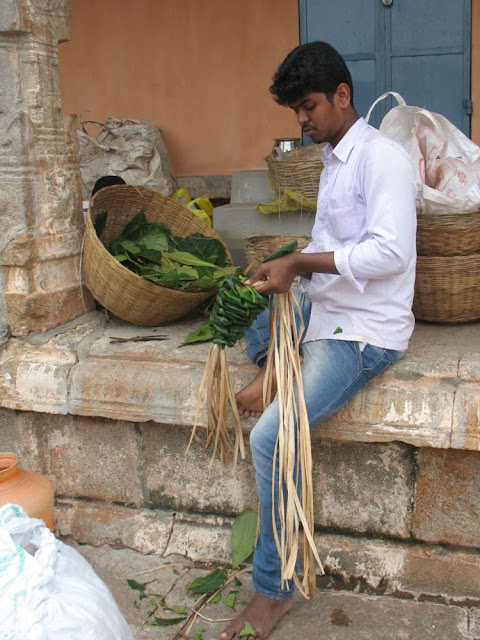Lamps are of varied sizes, shapes and colours. Traditionally, lamps are lit in temples and agal vilakkus adorn the thinnais of houses. Bigger lamps made of mud; stone and metal are lit inside homes. The ancient Tamils are said to have even imported lamps from as far as Greece and Rome, through the ports of Arikamedu (near Puducherry), Mallai or Mamallapuram and Mylai or Mylapore (part of present-day Chennai). One such imported lamp was of the hanging variety, designed in the shape of a swan with a fish placed at the top.
Another variety of lamp, common in Tamil Nadu from early times was the Lakshmi Vilakku or Pavai Vilakku. It was shaped like a woman (bearing in her folded palms), the shallow bowl containing oil for lighting the lamp.
At Arikamedu, archaeologists have unearthed a flat circular clay lamp with four nozzles or petals or openings for four wicks. Another clay lamp discovered at this site has 12 nozzles.
The ubiquitous five-nozzle kuthu vilakku has been in use from the days of the Cholas or perhaps even earlier. When the British East India Company began to rule parts of South India, it featured the petals or nozzles of the kuthu vilakku on some of the coins that were minted. The five petals or nozzles are also said to denote the five main elements are supposed to represent the five elements of Nature — earth, water, fire, air and sky or space. The five nozzles are also said to denote the five main elements needed for a successful life — health, wealth, learning, courage and longevity.

Silver Kuthuvilakkus
The three Gods Bramha, Vishnu and Shiva are believed to be present in the Vilakku. At the base part is Bramha,the middle part Vishnu and the broad part on top is Shiva
The Glow of the vilakku is represented as Goddess Lakshmi,the Light by Goddess Saraswati and the Heat by Goddess Parvati.

Vilakkupic
The five wicks in the kuthuvilakku represents our five senses and also the Panchaboothangal: 5 elements of the World; Earth, Water, Air, Sky and FireTraditionally, after Karthigai, most of these lamps, except for those in daily use, were cleaned and stacked away, and taken out only the next year for the festival. In the old, tiled-roof houses, agal vilakkus were invariably stacked in the loft beneath the roof.



























